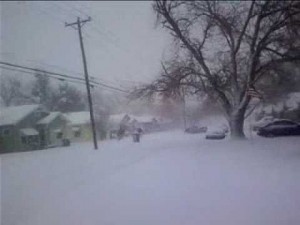Preparation Before a Blizzard in Roofing Wichita, KS
A blizzard is defined as a severe snowstorm accompanied by strong winds that last for several hours. The strength of the wind is what differentiates a snowstorm from a blizzard. A blizzard must have sustained winds of at least 35 mph for a prolonged period of time. This could really take a toll in your roofing Wichita, KS.
The snow dumped by a blizzard accumulates so fast that your entire roof will be covered by a thick coating of snow without you realizing it. By that time, you will be worrying whether your roof has the capacity to support that much snow. Attempting to shovel it off your roof could prove hazardous because of the risk of slipping and falling from the roof.
Preparation is the Key
The best protection against blizzard in your roofing Wichita, KS is preparation. Prepare your home both inside and out. To do so, pay attention to weather warnings on impending blizzard. Give yourself plenty of time to prepare your home against an oncoming onslaught of wind and snow.
A house’s first line of defense against bad weather is the roof. Since it absorbs all the force of the weather, it should be tough enough to withstand all the pounding of the wind and weight of snow and ice.
A fresh snow can add up to 20 pounds of weight per cubic feet. Partially thawed or refrozen snow adds as much as 60 pounds per cubic feet. Most roofs are, in fact, built to withstand this additional load. Homes located in snow-prone areas are fitted with roofs that can support even more weight.
Determine the combined weight of your roof in Wichita, KS and snow after a blizzard using these guidelines:
1. Freshly-fallen Snow
One foot of new snow weighs around 5 pounds per square foot on the roof. Assuming that your roof can handle up to 20 pounds per cubic feet, your roof can support up to four feet of snow before you start worrying about the load.
2. Old or Packed Snow
Packed or old snow about 3 to 5 inches thick is more or less equal to one foot of fresh snow. Your roof’s load limit will be at 2 feet thick of old or solid snow.
3. Ice
An inch thick of ice is roughly equivalent to a foot of fresh snow. The threshold limit for ice on the roof is around four inches.
Remember that the higher the pitch or slope of your roof, the lesser is the snow accumulation. Be wary if you have a flat roof because snow and ice buildup is imminent. Be always on the lookout for these load limits on your roof.
